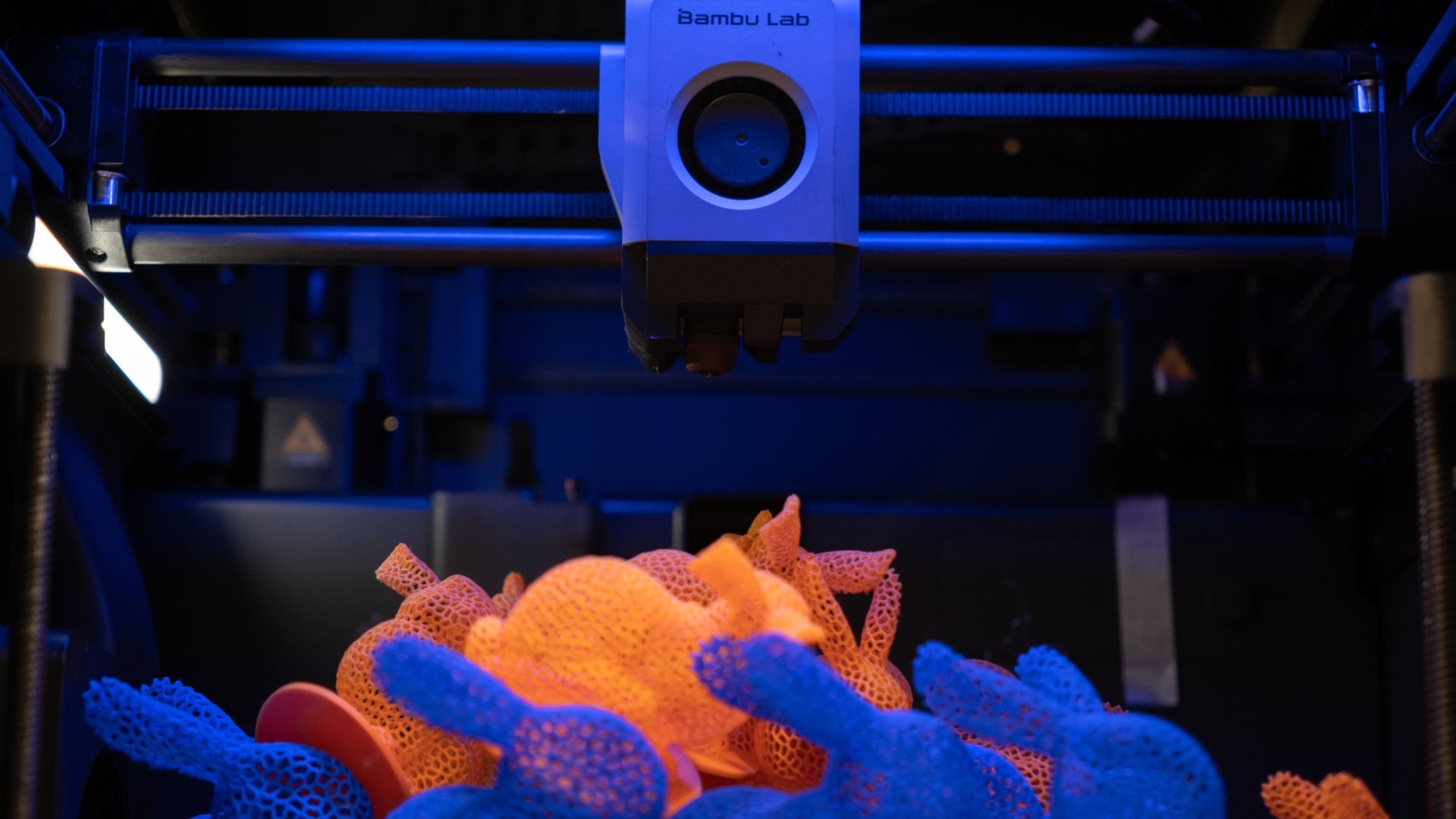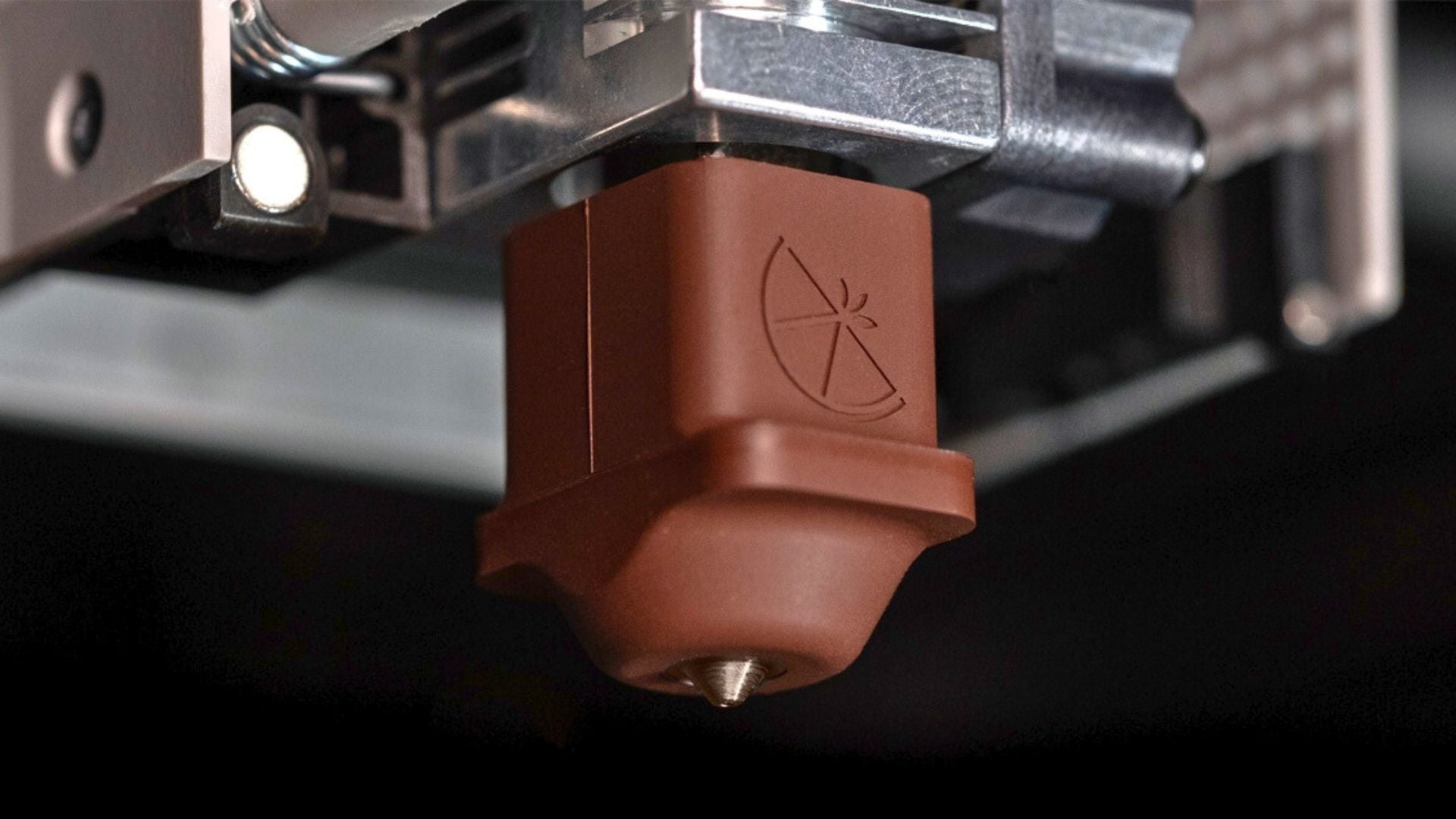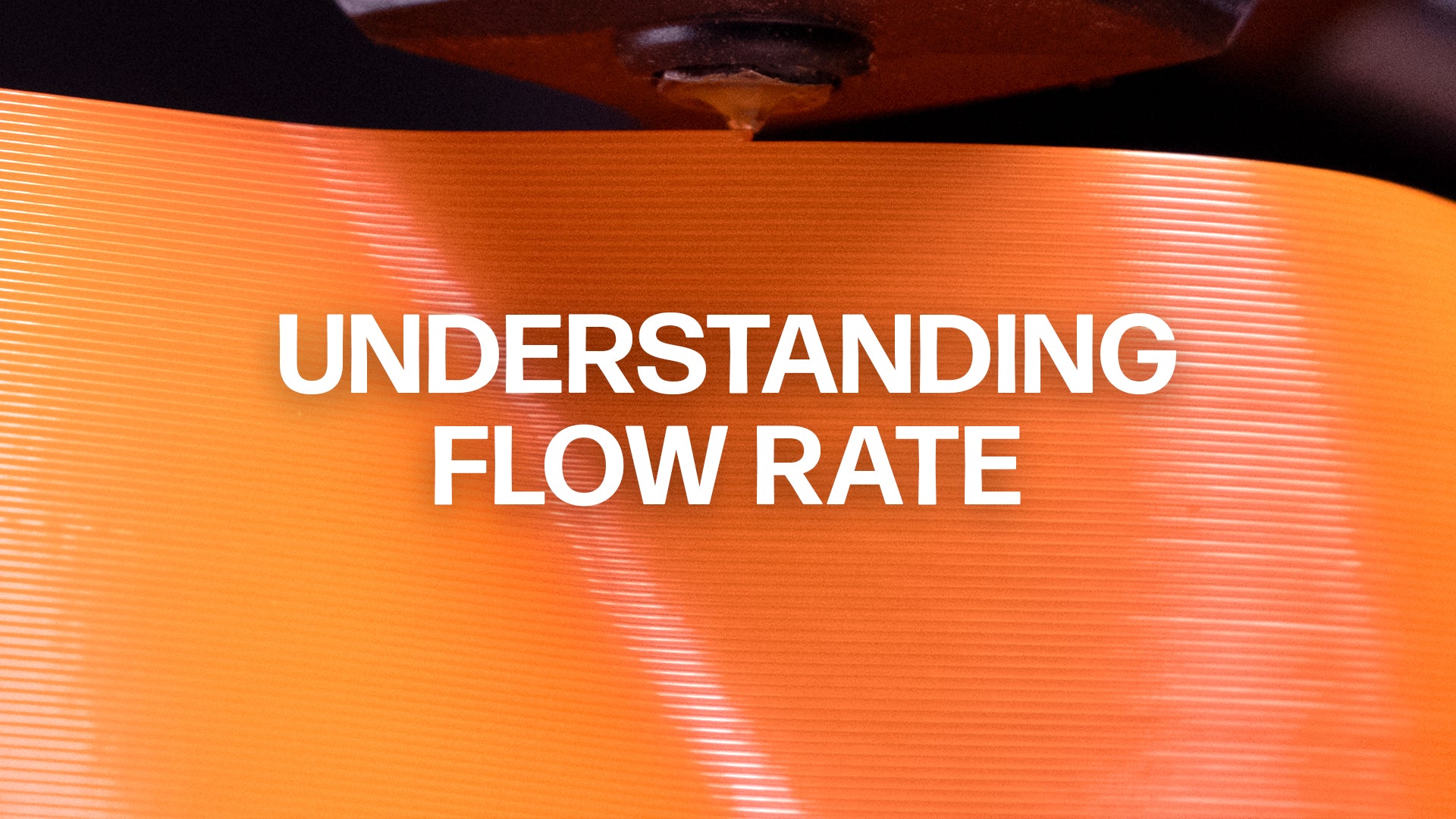
Understanding Hotend Flow Rate

Peyton Shelton
Marketing and Brand Manager
In 3D printing, the flow rate of your hotend is crucial. It determines how fast and efficiently your printer can operate. At Slice Engineering, we've been refining our understanding of this concept. Let's explore what flow rate is, why you should care, how our internal flow rate tests work, and why some of our claimed flow rate numbers are changing (for the better).
What is ‘Flow Rate?’
Flow rate refers to the quantity of a fluid that passes through a singular point in a specified amount of time. In our context, flow rate specifically refers to the rate at which molten filament is extruded through the hotend and out the nozzle during the 3D printing process. We measure this in cubic millimeters per second (mm3/s).
At Slice, we calculate the average volumetric flow rate by dividing the total volume of filament printed by the time required to finish the print. For example, if 100 mm3 of filament is used in 10 seconds, the flow rate is 10 mm3/s. The formula is:

Why Does Flow Rate Matter?
- High Flow = High Output
A high flow rate is crucial for optimal material deposition in 3D printing. More filament laid down quickly means faster print speeds without losing quality. This is great for big prints or tight deadlines.
- High Flow = High Efficiency
Efficiency is vital in 3D printing, especially when scaling up production. High flow
rates cut down print times. Faster material deposition means quicker print completion, allowing more work in less
time. This is especially useful in rapid prototyping or large manufacturing. Faster prints mean quicker project
turnaround, streamlining the production process.
How Do We Test Our Hotends?
Over the years, we've refined our flow rate testing. Our current flow rate procedure is designed to push hotends to their limit and determine their maximum practical volumetric flow rate capacity. See our white papers for Mosquito Magnum+® and Mosquito® Prime™ for detailed information.
We rely on the scientific method for our tests - a tried-and-true process scientists use everywhere. It's all about observing, guessing (or hypothesizing), experimenting, and then making sense of what we find. This isn't a one-shot deal; we do it repeatedly, refining our approach based on what we learn.
We test hotends by printing models that speed up during the print. We use a model with a specific winding geometry to see when a hotend fails to extrude filament properly. That model can be found here.

Flow Rate Test Model Geometry
Our flow rate testing looks like this:
- Starting with a Hypothesis:
- We begin with an idea of how well the hotend can perform and start the process there, increasing or decreasing our testing speed depending on the results.
- Pushing the Limits:
- We increase the print speed by 5 mm/s (or 2.5 mm/s for 2.85 mm filament) every few layers. Each print has four different speed zones.
- Timing and Observing:
- We time the print precisely with a camera.
- Checking for Failure:
- After printing, we examine the model for issues like skipping or under extrusion.
- We look for the point where it starts to struggle - we call this the 'point of failure.'
- We keep pushing the starting speed higher in each test, stopping when we achieve a point of failure at the halfway point of the test.
- Calculating the Flow Rate:
- Then, we divide the volume of filament printed by the time it took to print the entire test model.
- By averaging the flow rate over the whole print, we accurately estimate the hotend's actual point of failure. This average indicates the flow rate at the center point of the print, where the transition from stable operation to failure begins.

Flow Rate Test Result - Too Slow

Flow Rate Test Result - Too Fast

Desired Point of Failure
Keep in mind that lots of factors can influence the flow rate. We're after the absolute highest flow rate possible. So, we optimize everything - like using a larger nozzle size and adjusting the height and width of each filament layer. The layer height is 80% of the nozzle orifice, and the width is 1.5 times the orifice.
Additionally, we run these tests at two different temperatures. First, we stick to the temperature range recommended by the filament manufacturer. Then, we turn up the heat - usually by about 60°C. This is because, at higher speeds, the filament does not have enough time in the hot block to heat up to the set printing temperature. This temperature compensation helps the filament better reach the manufacturer’s recommended range on exit.
This approach of testing at two temperatures gives us a complete picture of how the hotend behaves under different conditions. It helps us (and you) understand its performance in various production environments.

Some Results from Mosquito Magnum+ Testing
Our Updated Flow Rates
We've improved our flow rate test since launching the Mosquito Hotend in 2018. The current test was finalized in 2021 with the release of Mosquito Magnum+. Since we used different methods for older and newer hotends, we retested our older models. Our new, stricter tests showed better flow rates than we previously thought.
The new flow rates, tested with High Heat PLA (3D850) and a 0.8 mm GammaMaster Nozzle, are:
|
Hotend |
Previous Flow Rate |
New Flow Rate (220°C) |
New Flow Rate (280°C) |
|
Copperhead® |
20 mm3/s |
31 mm3/s |
33 mm3/s |
|
Mosquito® |
25 mm3/s |
31 mm3/s |
35 mm3/s |
|
Mosquito® Magnum |
30 mm3/s |
34 mm3/s |
40 mm3/s |

Hotend Flow Rates (January 2024)
To continue providing accurate and valuable data to our customers, we are going to conduct expanded testing on each of our hotends to provide flow rate information for different nozzle sizes, materials, and temperatures. This will better show a hotend's maximum output and help predict production output in various settings.
To learn more about our flow rate tests, download our Mosquito Magnum+ White Paper here.




